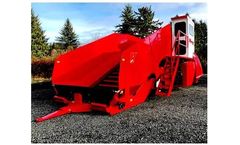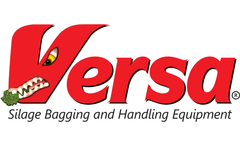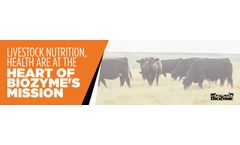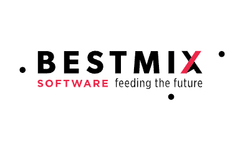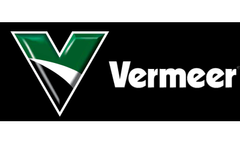Forage Quality Articles & Analysis
11 articles found
Cattlemen are increasingly turning to bagged silage for flexible feed management. The most fundamental beef cow feeding strategy remains the use of pasture, which is considered the lowest-cost feed resource. Therefore, many cattle operations aim to maximize pasture time annually to benefit from labor, manure management, physical activity, and nutrition advantages. ...
Compared to hay production, silage increases the potential yield of nutrients from available land, decreases feed costs, lowers harvest losses, and often increases forage quality. However, maximizing the benefits of silage depends on the proper packing of fodder crops stored in airtight conditions to prevent spoilage and increase nutrient value. ...
Livestock nutrition is a big business. At BioZyme® Inc., we know that good nutrition is also the cornerstone of a good health protocol. Nutrition and health work synergistically. It’s fairly well-known that 70% of the immune response occurs in the digestive system. A healthy immune response leads to a healthy animal. That is one reason that BioZyme places such an emphasis on digestive ...
Producers of feed products, no matter how well prepared, can always be faced with unexpected events that disrupt or even derail the production process. Weather conditions, for example, often dictate the quality of ingredients and subsequently also the composition of feed recipes and the diet of the ...
ByBESTMIX
“We’ve seen rakes evolve into different styles with new advanced features, but there’s always going to be a place for rakes in quality forage production.” As technical service support specialist for Vermeer, Kindley has seen plenty of examples. While some producers continue to mow hay without a conditioner and use a rake to form a ...
ByVermeer
A 3-yr (2005–2007) field experiment was conducted on a Gray Luvisol (Typic Cryoboralf) loam near Star City, SK, Canada, to determine the influence of single and combined annual applications of N, P, and S fertilizers on timothy (Phleum pratense L.) forage dry matter yield (DMY), quality [concentration of crude protein (CP), nitrate N, acid detergent fiber (ADF), ...
Timely assessments of nutritive values of legume-based swards during the growing season can facilitate a targeted and site-specific forage management. This study was undertaken to explore the potential of field spectral measurements for a nondestructive prediction of metabolizable energy, ash content, crude protein (CP), and acid detergent fiber of legume–grass mixtures. ...
Bermudagrass (Cynodon sp.) is an important warm-season forage grass for the South and may have value as a bioenergy feedstock. The objective of this study was to measure the genetic relatedness among entries of the Cynodon clonal forage bermudagrass core collection and seven commercial forage cultivars using plant phenotype and molecular marker ...
Berseem clover (Trifolium alexandrinum L.) should be intercropped with cereals for forage quality improvement, livestock bloat avoidance, and fertilizer requirements reduction. ...
We studied effects of second harvest timing and height on yield and forage quality for smooth bromegrass (Bromus inermis Leyss.), alfalfa (Medicago sativa L.), and cicer milkvetch (Astragalus cicer L.) in central Alaska. ...
The value of corn grown for silage is a function of both the yield and quality of the forage produced. An improved understanding of the effects of defoliation on forage quality would improve the ability of agronomists, farmers, and crop insurance adjusters to assess the economic impact of hail damage to corn harvested for ...

